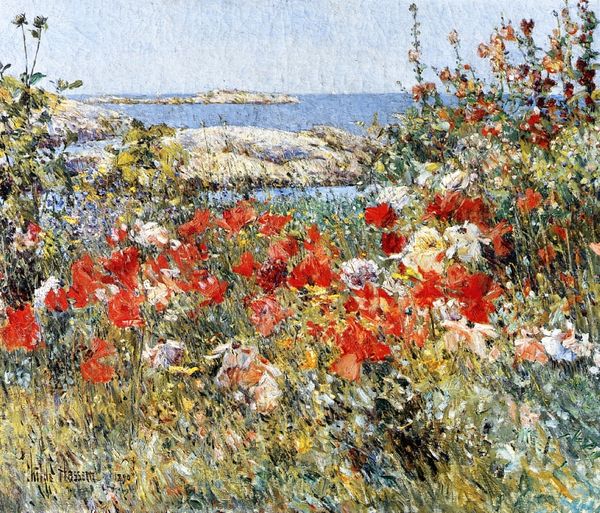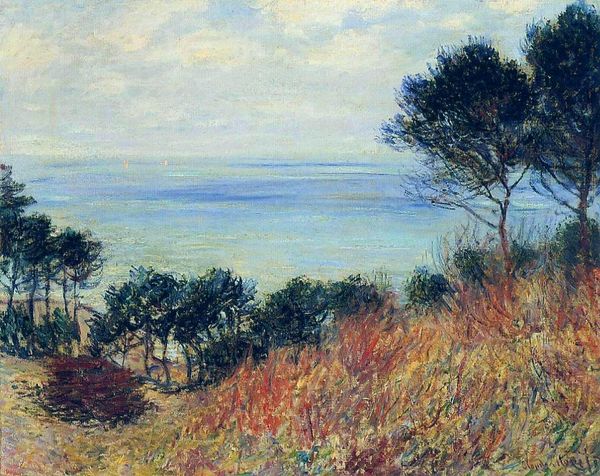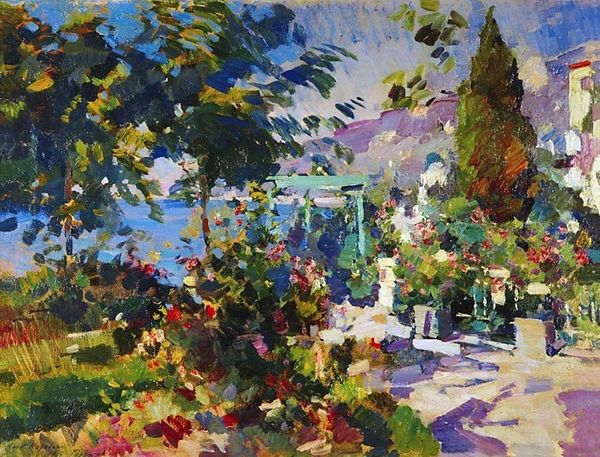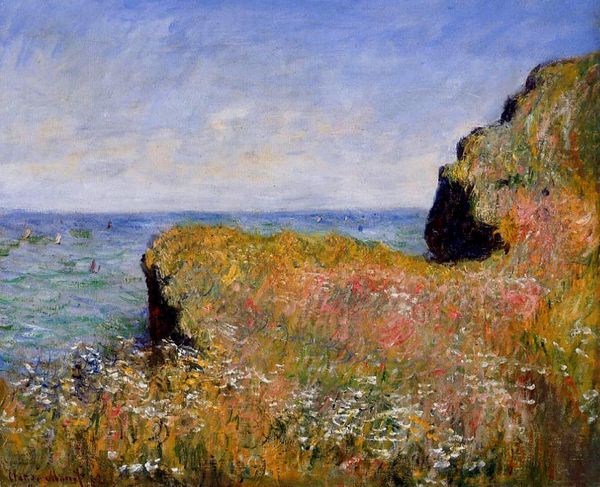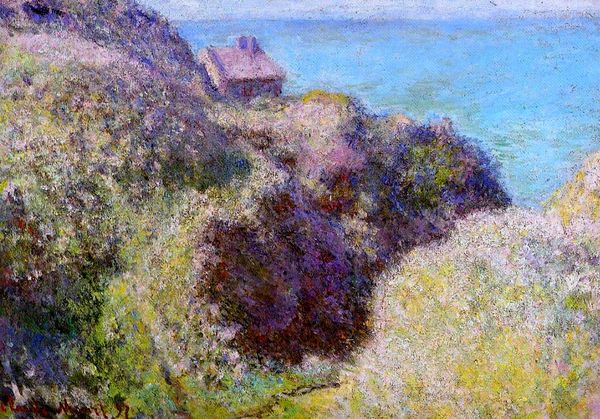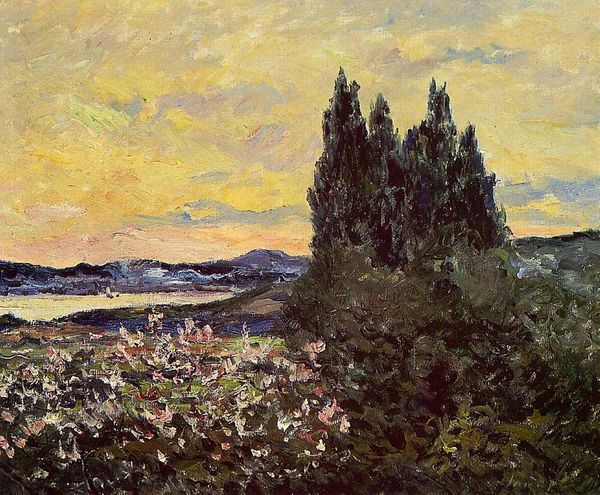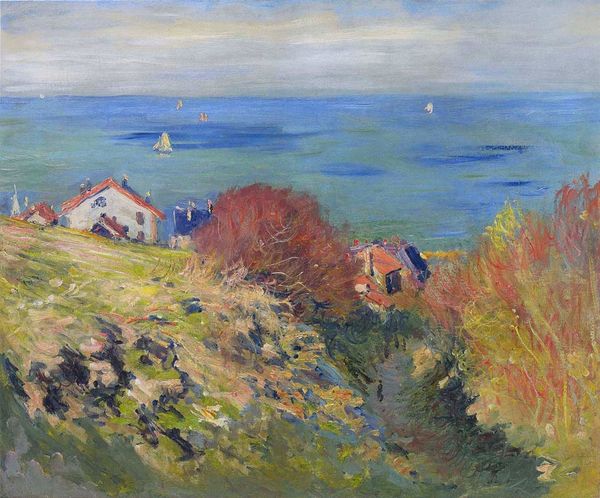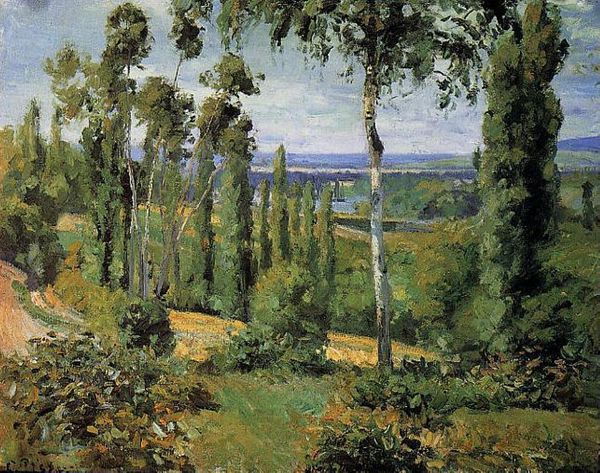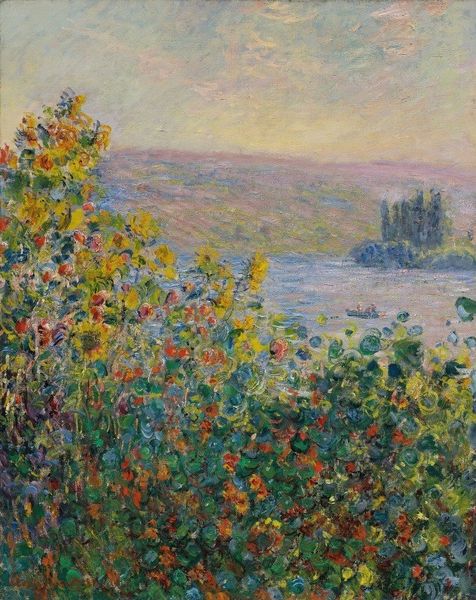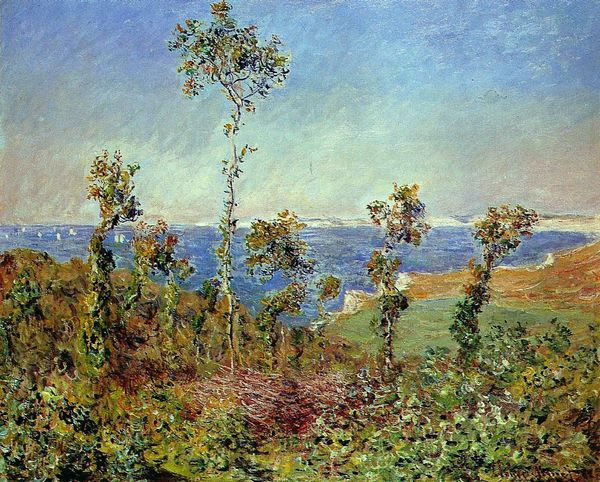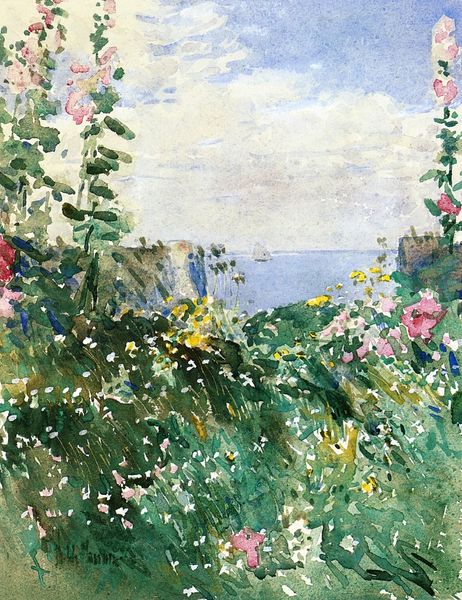
Copyright: Public domain
Curator: Here we have Childe Hassam's "Hollyhocks, Isles of Shoals," completed in 1902. It is, in some ways, a classic Impressionist landscape. Editor: The overall effect is immediately uplifting. It’s such a breezy scene—the vibrant color palette just radiates summery contentment. Curator: Hassam’s work during this period was deeply invested in exploring the interplay between human labor and natural beauty. The Isles of Shoals, particularly Celia Thaxter's garden, became a crucial site for him to explore these relationships, especially with pastel. It seems he valued its unique textural possibilities. Editor: Absolutely. It’s more than just a depiction of flowers; it's an examination of gendered space and the relationship between women and nature. Thaxter’s garden was legendary. She herself became a symbol of female creativity and independence in the late 19th century. We see her influence reflected through Hassam's gaze, an environment shaped by a woman’s hand, observed by a male artist. Curator: And Hassam uses impasto techniques here. I can imagine the rich materiality, the thickness and density that one might not register fully from afar. It invites close looking at the visible mark making, and reveals something fundamental about artistic choices, both historically and conceptually. It invites one to consider how those decisions are embedded in this artwork's meaning. Editor: Definitely. And considering that the artist was affiliated with the Ashcan School later on, famous for depicting urban life with raw honesty, there is a compelling contrast here in both subject and approach. How might this image challenge or perhaps uphold existing hierarchies? I see Hassam trying to navigate between a purely aesthetic rendering and a social commentary. Curator: His careful, yet impressionistic approach, provides this dual perspective of art existing in an ever-changing social environment. In this instance, pastel allowed for both. Editor: Indeed, a piece of enduring resonance in both the art world and its ever-evolving socio-historical framework.
Comments
No comments
Be the first to comment and join the conversation on the ultimate creative platform.
